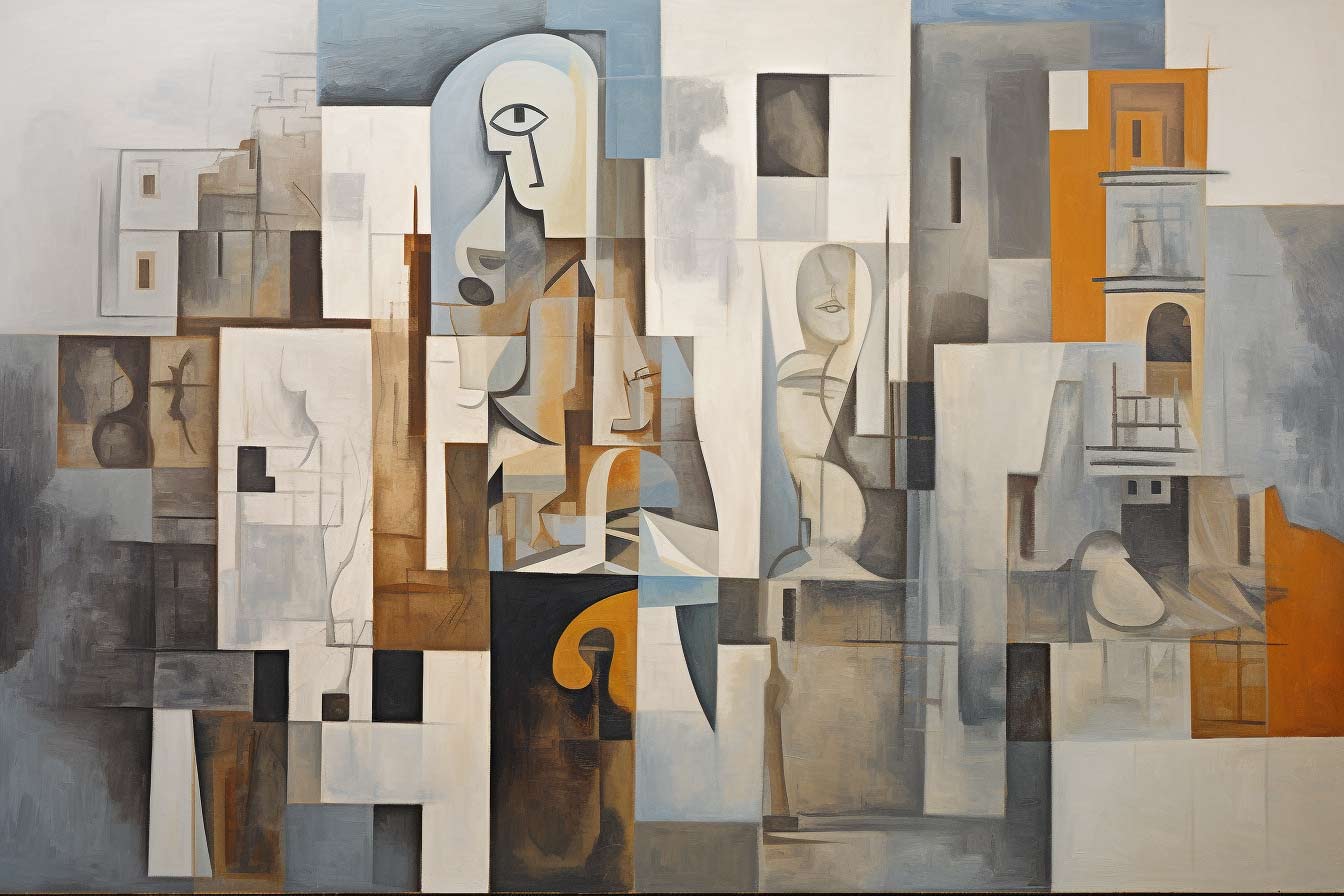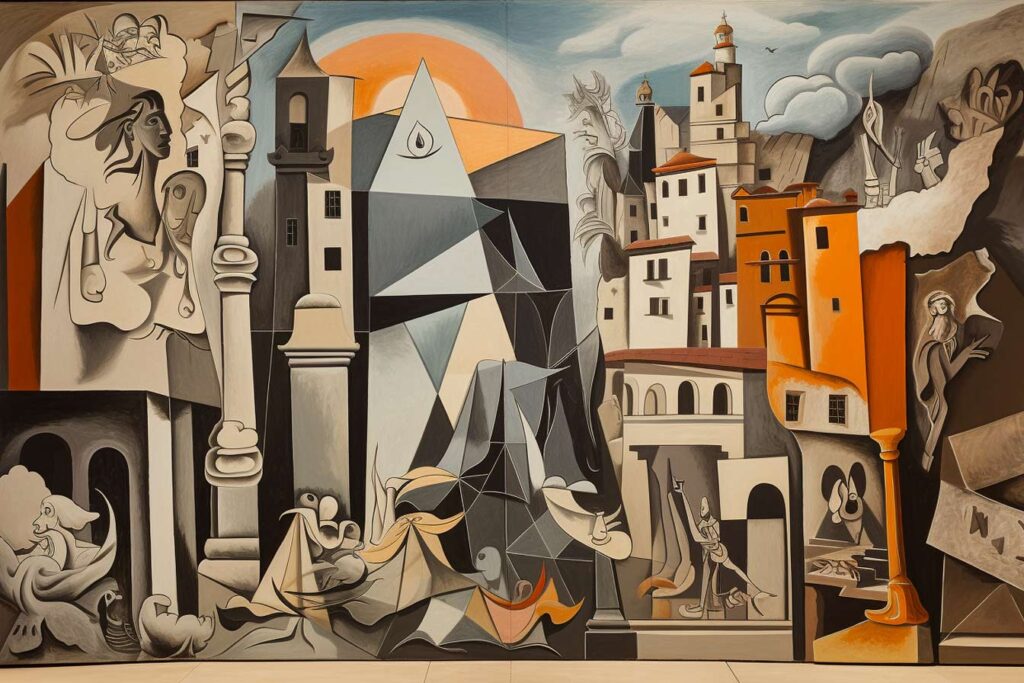The Cubist Epoch: A Bold Foray into Dimension and Perception
The Emergence of a Radical Form
In an era where the arts blossomed and dared to challenge the conventions of the old, there emerged a movement so transformative in its essence that it reshaped the very perception of reality in art: Cubism. Venturing into an exploration of form and space, it brought forth a divergence from the representational to the abstract, compelling the observer to see beyond the immediate.
Pioneers of Cubist Visions
Among the vanguard of this daring movement, certain names rise with prominence, casting long shadows of influence over future generations.
- Pablo Picasso: An embodiment of innovative spirit, Picasso dismantled and reassembled the human form, challenging the beholder to perceive and comprehend from diverse perspectives. His work, often fragmented yet profoundly insightful, speaks of a deep understanding of both the form and the soul.
- Georges Braque: Walking side by side with Picasso in this revolutionary journey, Braque’s contribution to Cubism is monumental. With a penchant for muted tones and intricate patterns, his works exhibit an exquisite interplay of light and shadow, inviting the viewer into a dance of perception.
- Juan Gris: His approach, often more colorful and brighter in tone than his contemporaries, added another layer of depth to Cubism. Gris’s pieces are infused with a sense of rhythm, presenting the world as a harmonious assembly of geometric forms.
Dimension and Perception: The Heart of Cubism
To fully immerse oneself in the world of Cubism is to embrace a multiplicity of viewpoints. The canvas no longer serves merely as a passive medium to depict reality but becomes a dynamic playground where dimensions intermingle and coalesce. Shapes and forms, once perceived as fixed and immutable, are now mutable and fluid. This deconstruction of reality pushes the beholder to question the very nature of perception.
This dynamism is evident in the intricate layers and planes that overlap and intersect, creating a sense of depth and dimension that is both bewildering and enlightening. Where one might see chaos, another discerns harmony; where one perceives fragmentation, another witnesses unity. The cubist canvas is, in essence, a mirror reflecting the intricacies of human perception and cognition.
A Lasting Legacy
Cubism, in its audacious defiance of convention, has indeed left an indelible mark on the annals of art history. By challenging the conventional modes of representation, it has paved the way for a plethora of modern movements, each drawing inspiration from its innovative spirit. It serves as a testament to the power of art to provoke thought, challenge norms, and forever alter the course of history.

